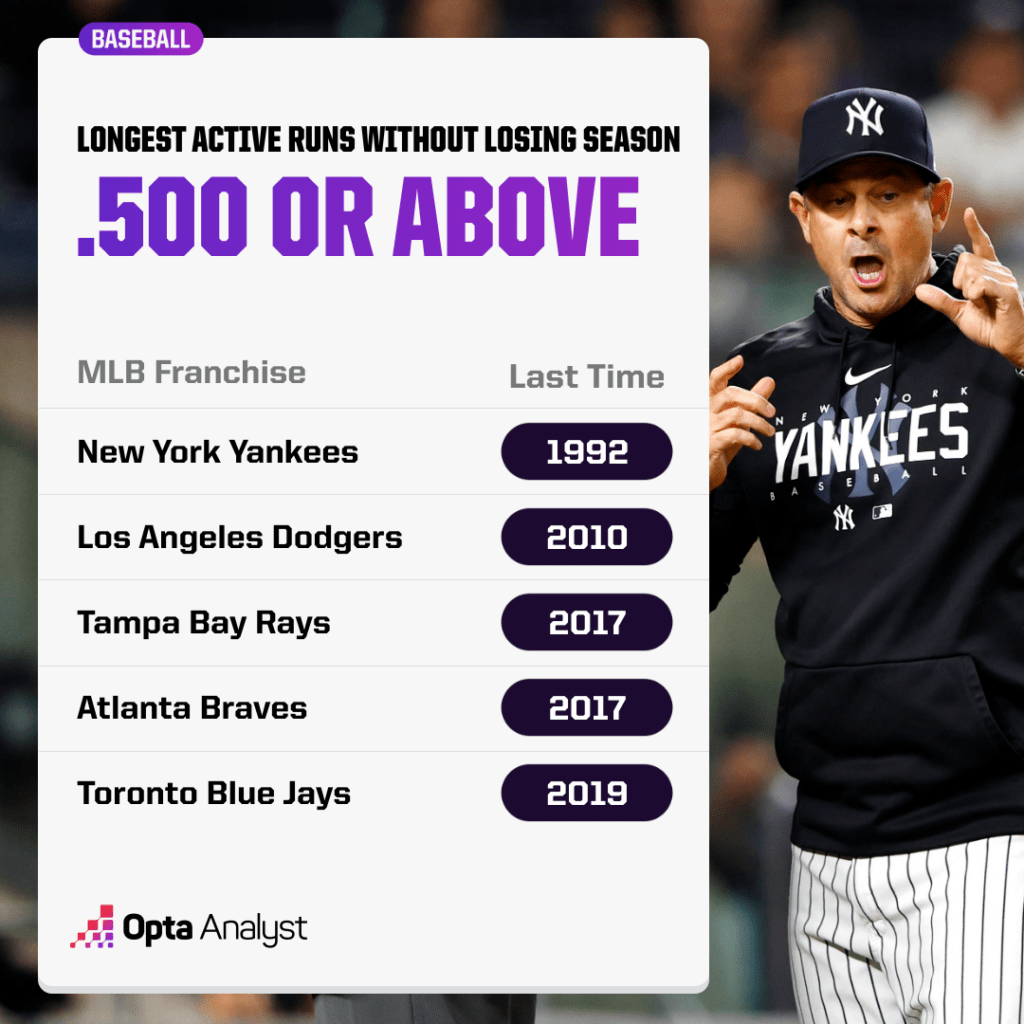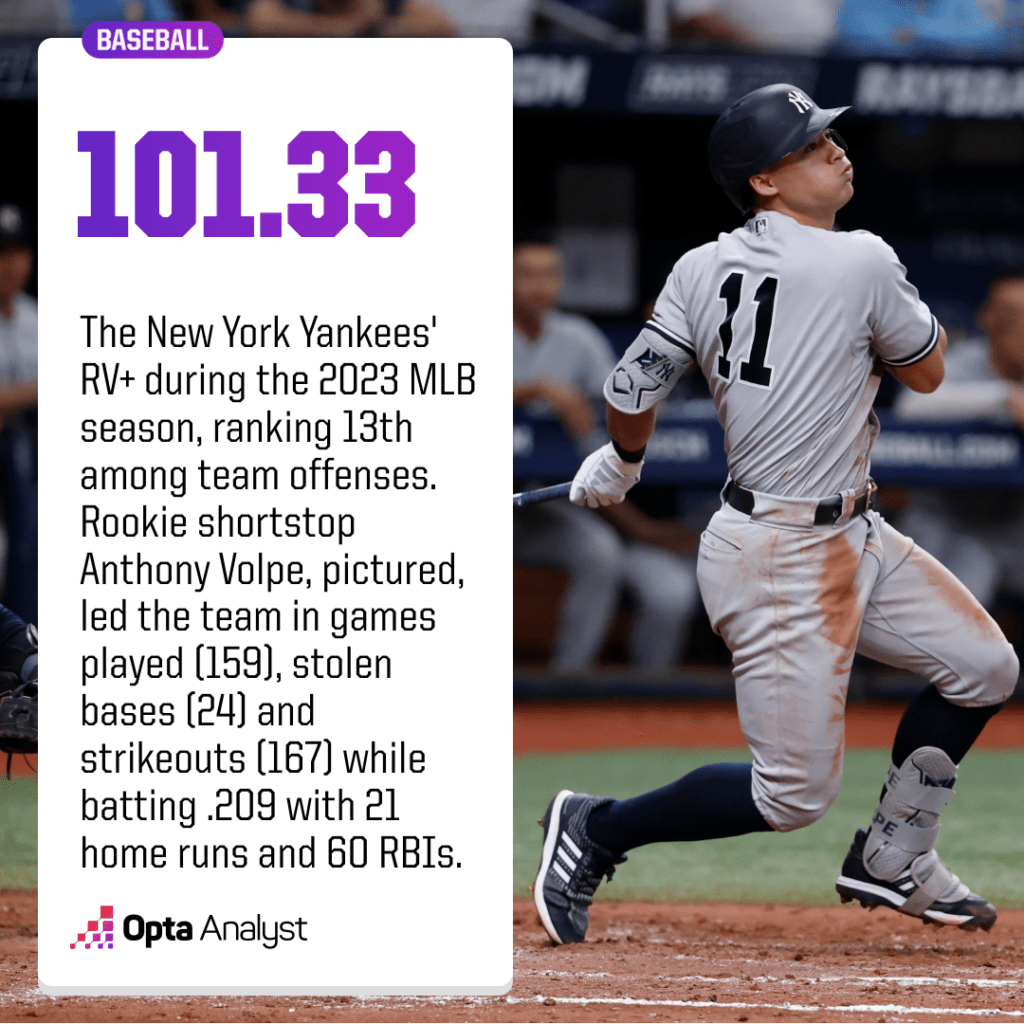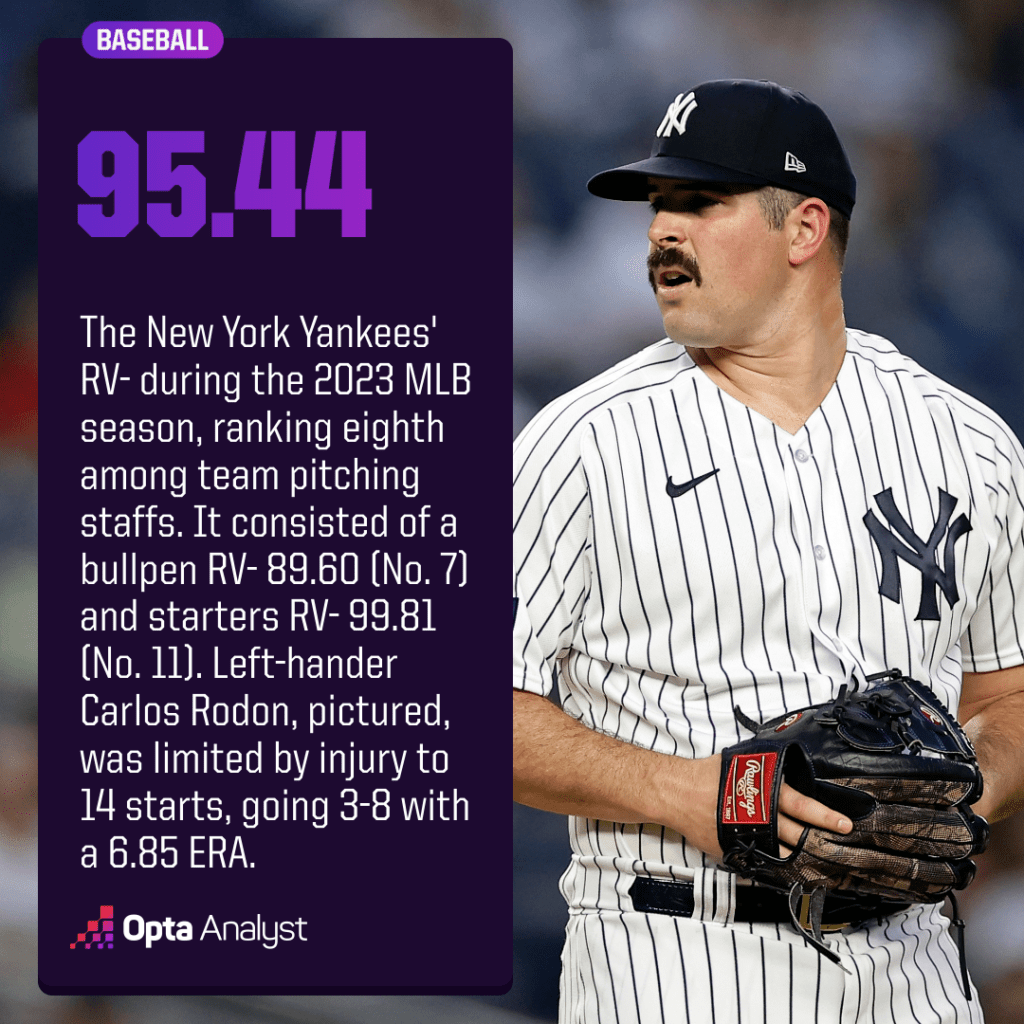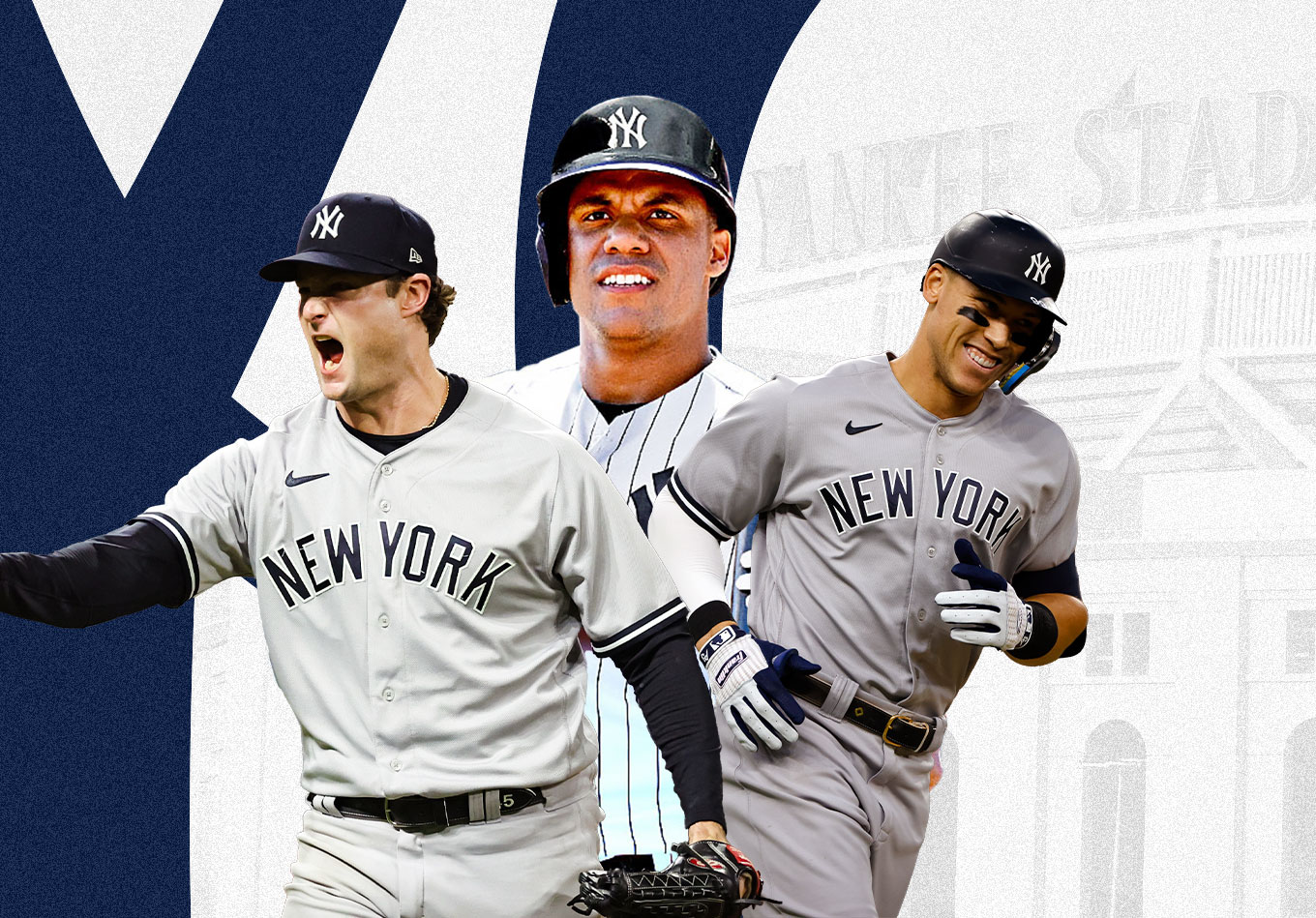The New York Yankees entered the offseason with a long list of urgent problems. After adding Juan Soto, how many are solved coming into spring training?
Their offseason could accurately be described – without any tabloid exaggeration – as pivotal.
After missing the MLB playoffs for the first time since 2016 and posting an 82-80 record that was the storied franchise’s worst since their last finish under .500 (76-86) in 1992, Yankees general manager Brian Cashman, manager Aaron Boone and team owner Hal Steinbrenner entered the offseason swimming through a wave of panicked questions and vague organizational aspersions.
A season that was marked by roster holes, underwhelming (or worse) new attractions and injuries turned into a house of mirrors that sent blame ricocheting in all directions. Steinbrenner mentioned an audit into how the club used analytics, but no major public shakeup followed. Superstar outfielder and captain Aaron Judge alluded to the idea the team “might be looking at the wrong (numbers).”
Cashman mounted a fiery defense of his own front office, most famously declaring, “I’m proud of our people, and I’m proud of our process. Doesn’t mean we’re firing on all cylinders, doesn’t mean we’re the best in class, but I think we’re pretty (blanking) good, personally.”
When the gnashing of teeth was over, the same task remained: Retool a win-now roster headlined by Judge (who will turn 32 in April) and reigning AL Cy Young winner Gerrit Cole (now 33) to actually win now.
As the Yankees continue to report to spring training in Tampa this week, let’s examine the biggest questions that loomed over the offseason, and evaluate how well their moves addressed them.

Can The Yankees Get Aaron Judge Help in the Lineup?
Whatever numbers Judge and the Yankees use, the 2023 offense was clearly not up to winning standards.
The Yankees had only two clearly above-average hitters in raw value, with Judge and second baseman Gleyber Torres tallying the only seasons of at least 200 plate appearances with RV+ marks at 110 or higher (with 100 considered league average). It’s not hard to glance around and see how that doomed the team in the daunting AL East. The Baltimore Orioles had six such hitters, the Toronto Blue Jays and Tampa Bays Rays five apiece, and the Boston Red Sox four.
The Yankees’ team on-base percentage (.304) was fourth from the bottom in MLB, besting only the Kansas City Royals, Oakland Athletics and Chicago White Sox – not company you want to keep – their team OPS (.701) ranked 24th, and their baserunning value, per FanGraphs, 28th.
Roll it all together and they wound up 25th in that most unquestionable of measures at 4.15 runs per game.
Whatever offensive machine Cashman and Co. might have envisioned lost traction as veterans Giancarlo Stanton and DJ LeMahieu labored just to achieve mediocrity (registering 107 and 106 RV+ numbers, respectively), Anthony Rizzo’s production tanked as he suffered through post-concussion syndrome, and Anthony Volpe (97 RV+) merely treaded water offensively as a rookie.

Since acquiring Stanton ahead of the 2018 season, the Yankees had persistently shied away from adding top-of-the-market hitters from outside the organization, watching Bryce Harper, Corey Seager, Manny Machado and Freddie Freeman become available but land elsewhere, and often justifying it by referring to the (inherently unproven) promise encapsulated by young talent such as Volpe.
The philosophy finally changed this offseason. Cashman struck the biggest non-Shohei Ohtani blow of the hot stove season through a blockbuster trade with the San Diego Padres that brought Juan Soto to the Bronx for his last season under team control. Owing to that short-term commitment and the Padres’ desire to shed salary, the Yankees pulled it off without any real impact on their lineup, instead enticing San Diego chiefly with young pitchers Michael King and Drew Thorpe.
Soto, the 25-year-old hitting savant who routinely paces the league in walks, will be by far the most potent hitter to join Judge as they form one of the more thunderous duos in baseball. Among hitters with at least 400 plate appearances last year, Judge and Soto ranked first and eighth, respectively, in RV+.
Plus, over the past five seasons, Judge ranks second and Soto fourth in OPS among hitters with at least 1,000 plate appearances, while no one else who has played for the Yankees is in the top 50.
Count the box emphatically checked.
Can the Yankees Add Durability, Depth to Guard the Roster Against Risk?
Yankees fans are too familiar with the perils of placing their hopes in one or two very expensive baskets. While Judge and Cole have excelled at all times, one-time big-ticket additions Stanton and LeMahieu have struggled to maintain their numbers. Judge’s toe injury last summer, suffered on a freak play at Dodger Stadium, exposed a startling lack of viable depth in the outfield.
The Yankees’ season took on water as they plumbed the depths of replacement-level hitters, desperate to plug Judge- and Stanton-sized holes, and even fill in for now-departed center fielder Harrison Bader. Hitting coach Dillon Lawson took the fall – he was fired in early July as the lineup floundered – but the personnel who remained after a few key injuries simply wasn’t on the same level with the more bountiful rosters in Baltimore, Tampa and Toronto.
Cashman also addressed this glaring weakness, swinging a deal with the rival Red Sox for Alex Verdugo and adding Trent Grisham in the Soto trade. Verdugo will be looking to start a brighter chapter in his career after an inconsistent stint as Boston’s main return for Mookie Betts, perhaps one where he’s more appropriately cast as a league-average-ish bat.
Verdugo lacks the power to anchor a lineup, but his strong bat-to-ball ability (108 contact+) and general competence at any outfield spot will help when the Yankees have to shuffle pieces to account for injuries and rest days.
The exceedingly patient Grisham mustered only a 96 RV+ last season, but he’s a superlative defender in center field who can hold the fort until top prospect Jasson Dominguez returns from injury returns in the summer.
While Verdugo and Grisham aren’t high-ceiling players, they would have represented huge upgrades last season. The Yankees gave 1,321 plate appearances to hitters with worse RV+ marks than Grisham who primarily played the outfield.
Perhaps most importantly, the new acquisitions are high-availability players, which is a stark contrast to Stanton and other recent Yankees such as Bader. Since 2021, Verdugo has averaged 617 plate appearances per season and Grisham is at 535. The youthful Soto, it should be mentioned, also has a sparkling record of health, missing only 47 of his teams’ games since debuting in May 2018.
Verdugo, Grisham and Soto also share one other notable trait: they bat left-handed. Despite that famously short right-field porch, the Yankees had an obvious dearth of left-handed hitters in 2023, giving fewer plate appearances to lefties than all but one other team.
Giving a few more real major-league hitters an opportunity to pull fly balls into the bleachers is an easy way to add some potential runs on the margins.
Can the Yankees Raise a Pitching Staff That Crumbled Behind Gerrit Cole?
Even with Cole fronting the rotation, the Yankees had serious issues on the pitching front last year.
Carlos Rodon, last winter’s marquee addition, couldn’t have mustered a worse opening act in New York. The left-hander was limited by injuries to 14 starts, and when he was on the mound, he posted a disastrous 6.85 ERA (in contrast to 2.67 over a combined 55 starts in 2021 and ’22).
Nestor Cortes Jr., a revelation in 2021 and ‘22, managed only 63 1/3 innings due to injury. Domingo German posted middling numbers outside his perfect game before being placed on the restricted list to seek treatment for alcoholism. Luis Severino endured a campaign that mirrored Rodon’s in what turned out to be his last season with the Yankees.
That’s a lot for any staff to overcome, and it could have gone far worse. The Yankees still finished with a better-than-average RV- 95.44, which ranked eighth in MLB (again the league average is 100, but for pitchers, the lower the number, the better).

Getting Rodon and Cortes back to their previous levels of performance is the No. 1 necessity for the Yankees pitching staff, but more reinforcements were required beyond that to stave off further risk given the Soto trade sent away King and depleted some upper-level depth.
As spring training begins, the answer here is less inspiring. The Yanks have little choice but to put faith in a Rodon bounce-back as he enters the second season of a six-year, $162 million deal after not reeling in a top-line starter (though reigning NL Cy Young winner Blake Snell and ascendant former Yankees starter Jordan Montgomery remain on the market). Instead, the team struck a deal with steady starter Marcus Stroman.
In theory, Stroman makes a lot of sense to stabilize the middle of a rotation. For the majority of his nine seasons, his formula has worked: Lots of grounders, 25+ starts and an ERA around 3.50. But there are some cracks forming as Stroman approaches his 33rd birthday.
He’s still getting grounders, but it’s taking more extreme measures to do so. The average velocity on his sinker dipped under 92 mph for the first time in his career last year, and he’s growing more reluctant to put his pitches in the strike zone. His 91 strike+ mark is flirting with disaster for a starter without swing-and-miss stuff (86 whiff+, or 14% below the league average of 100).
For now, Stroman’s late movement and strong command give him the tools to manage the tightrope act, but he’ll need to get creative to rein in a career-worst 9.0 walk percentage.
Clarke Schmidt, the team’s No. 5 starter, made 32 starts in his first full season last year, but would probably fare better in the bullpen long-term. Emphasizing a cutter helped later in the season, but he struggled to limit damage.
The Yankees’ relative inaction on the pitching front is related to their decision to ship out several promising young pitchers in the Soto deal. They are probably hopeful that a prospect in the upper minors such as Chase Hampton or Will Warren can surge forward and grab a rotation spot in 2024.
Do the Yankees Have a Way to Inject Athleticism and Upside?
For all the stars the Yankees passed on in recent years, their front office had eyes on something desirable: A young core of players who could age into their primes instead of out of them.
The most-prized prospect arrived last year in Volpe, a shortstop who took his lumps with the bat – suffering strikeout issues and logging a rough .283 OBP – but he hit 21 home runs, stole 24 bases and played strong defense. There’s room and opportunity for a step forward.
Elsewhere on the roster, the opportunities aren’t as obvious. Oswald Peraza, another middle infielder who showed intriguing flashes in the 2022 postseason, found himself boxed out by Volpe and never found consistent footing or playing time.
Rumors at the beginning of the offseason suggested Cashman might trade Torres, a mediocre defender who is entering his walk year, to make room for Peraza’s stellar glove and upside. That didn’t happen, and it makes sense when you consider the higher priority of lengthening the lineup – Torres stayed both healthy and productive, unlike others.
Still, the organization’s relative lack of youth will likely continue to be a drag on defense and the base paths, where many teams found stolen bases flowing freely thanks to new MLB rules. There are logjams occupied by highly paid, slower-footed players in both the infield and outfield – blatant enough to make you wonder if the Yankees are just planning for inevitable injuries rather than hedging against them.
The corners are occupied by LeMahieu and Rizzo. Both mid-30s stars could be excellent offensive contributors, but counting on their health and continued productivity is probably ill-advised, and there’s nowhere else to put them because in the outfield, Soto’s arrival and Stanton’s scattershot health basically require the designated hitter slot be reserved for Stanton.
That simultaneously hinders the outfield defense because, at least to start the season, Boone will likely ask Judge to man center field most days (potentially adding strain and injury risk), as Verdugo is a better offensive player than Grisham but less suited to center.
The clearest opportunity for a new contributor that doesn’t rely upon injuries will come at catcher. Austin Wells, a 24-year-old bat-first backstop, will have a chance to claim a share of playing time alongside defense-first catcher Jose Trevino.
Then there’s Dominguez, the hyped outfield prospect who debuted and got injured in a blaze of glory last summer. He will undoubtedly be earmarked for the starting center field job between Soto and Judge when he returns from Tommy John surgery around midseason.
Dominguez’s return, though promising, will only accentuate the pressing questions the Yankees haven’t, and in some cases just cannot, answer with real confidence.
For all the obvious merits of acquiring a hitter like Soto, he is a plodding defender whose muscle-over-moves style elevates the Yankees’ existing formula without really changing it. Plus, he is one year from what’s expected to be a very highly priced free agency. Even though winning now is undoubtedly the top priority, and Soto the single best available means to achieving that end, they kicked the can down the road on other fronts.
There’s good reason to dream: Judge and Soto plus Cole and a broader swath of useful major-league role players might equal a World Series-worthy team. Projections at both Baseball Prospectus and FanGraphs peg the Yankees as AL East favorites once again.
But there are also lingering doubts — about maximizing their young talent, about the rotation beyond Cole, about 2025 and beyond — that are on the back burner for now.
The process Cashman vigorously defended appears decidedly more urgent than it had in recent years, with an extreme spotlight now set on 2024. Soon enough, those results will be in.
If the improvement isn’t immense, next winter’s questions might be much, much harder to answer.
